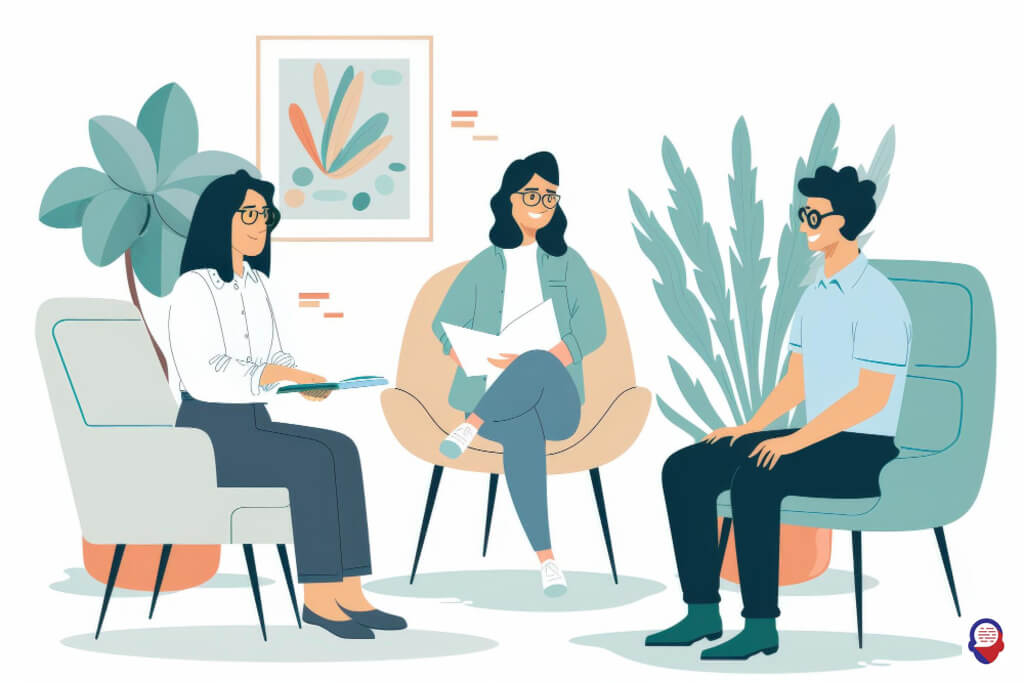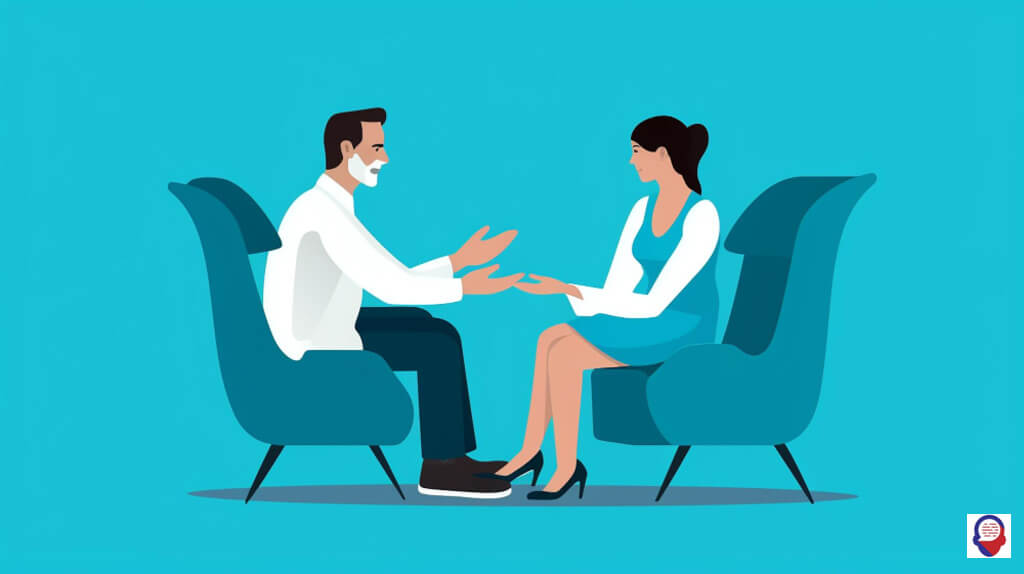Your Path to Freedom: A Guide to OCD Behavioral Therapy
Living with Obsessive-Compulsive Disorder can feel like being trapped in a relentless cycle, a prisoner to your own mind. The intrusive thoughts, the overwhelming anxiety, the urgent need to perform rituals, it can consume your days and steal your peace. But what if there was a key to this prison? A proven, powerful method not just to cope, but to reclaim your life from the grips of OCD. There is. It’s called behavioral therapy, and it represents the most effective path toward lasting freedom.
This is not a journey about simply managing symptoms, it is a journey of empowerment. It’s about understanding the engine that drives OCD and learning how to systematically dismantle it, piece by piece. Through a specific, evidence-based approach, you can learn to face your fears, break the cycle of compulsions, and teach your brain a new way of responding. This guide will walk you through that process, demystifying the gold-standard treatment for OCD and illuminating the road ahead.

What Is Obsessive-Compulsive Disorder (OCD)?
Obsessive-Compulsive Disorder, or OCD, is a mental health condition defined by a pattern of unwanted, intrusive thoughts and fears, known as obsessions, that lead you to perform repetitive behaviors, or compulsions. These are not simple worries or habits, they are intense, time-consuming, and cause significant distress, interfering with daily life.
The obsessions are the "O" in OCD. They are persistent and unwelcome thoughts, images, or urges that pop into your mind against your will. They often center on themes like contamination, harm to oneself or others, order and symmetry, or taboo subjects. These are not passing concerns, they feel sticky, dangerous, and create a profound sense of anxiety or disgust.
The compulsions are the "C." These are the actions, both mental and physical, that you feel driven to perform in response to an obsession. The primary goal of a compulsion is to neutralize the thought, prevent a feared outcome, or reduce the unbearable anxiety the obsession has created. This might look like excessive hand-washing, repetitive checking, ordering and arranging, or mentally repeating certain phrases. The relief they provide is fleeting, a temporary fix that ultimately strengthens the disorder’s grip.
This creates a vicious and self-perpetuating cycle. An obsession triggers intense anxiety, which leads to a desperate urge to perform a compulsion. Completing the compulsion brings a brief moment of relief, but in doing so, it reinforces the brain’s false belief that the compulsion was necessary to prevent disaster. This validation makes the obsession more likely to return, often with even greater intensity, starting the cycle all over again.

What Is Behavioral Therapy?
Behavioral therapy is a focused and action-oriented type of psychotherapy that aims to identify and change unhealthy or unhelpful behaviors. Its core principle is that behaviors are learned responses to our environment and internal states, and therefore, they can be unlearned and replaced with healthier, more adaptive ones.
Unlike some other forms of therapy that delve deep into childhood experiences to find the root cause of distress, behavioral therapy concentrates on the present. It looks at the current problems and the behaviors that are maintaining them. The focus is practical: what are you doing, what are the triggers, what are the consequences, and how can we change that pattern right now?
For OCD, this approach is uniquely powerful. It doesn’t get bogged down trying to figure out why you have a specific intrusive thought. Instead, it targets the compulsive behavior that keeps the thought feeling so important and dangerous. By changing your behavioral response, you fundamentally change your relationship with the thought, breaking the cycle at its most critical link.

Why Is Behavioral Therapy the Gold Standard for OCD?
Behavioral therapy, specifically a form called Exposure and Response Prevention (ERP), is considered the gold-standard treatment for OCD because it directly confronts the core mechanism of the disorder with decades of scientific research proving its superior effectiveness. It is the most recommended psychological treatment by major health organizations worldwide for this specific condition.
While other therapies may offer support, ERP is uniquely designed to break the OCD cycle. It doesn’t just talk about the fears, it actively helps you face them. It doesn’t just explore the anxiety, it teaches your brain that the anxiety is a false alarm that will subside on its own, without the need for rituals. The evidence is overwhelming, showing that ERP leads to significant and lasting symptom reduction for the majority of people who complete the treatment.
The power of ERP lies in its ability to produce what is called habituation. Your brain learns through direct experience. By confronting a feared situation (exposure) and not performing the ritual (response prevention), you allow your anxiety to rise and then naturally fall. This process teaches your brain two crucial lessons: the feared catastrophe does not happen, and you are capable of tolerating the discomfort. This new learning is what leads to long-term change, not just temporary relief.

How Does Exposure and Response Prevention (ERP) Work?
ERP works by having you voluntarily and gradually confront the thoughts, images, objects, and situations that trigger your obsessions, which is the "Exposure" part, while you simultaneously make a commitment to refrain from engaging in your typical compulsive behaviors, which is the "Response Prevention" part. This two-pronged approach systematically breaks the connection between anxiety and rituals.
Imagine your OCD is like a faulty car alarm that goes off every time a leaf falls on the hood. The obsession is the blaring alarm. The compulsion is your frantic rush to check the car and reset the alarm. ERP is the process of intentionally letting a leaf fall, hearing the alarm, and consciously choosing to stay on your porch instead of running to the car. At first, the noise is maddening, but eventually, you learn the alarm is just noise, it’s a false signal, and it will eventually turn off by itself.
Through repeated practice, you are essentially recalibrating this faulty alarm system. You are creating new neural pathways in your brain, pathways that recognize the intrusive thought as insignificant background noise rather than an urgent threat that requires an immediate, ritualized response. It’s an active, courageous process of unlearning fear.

What Is the “Exposure” Component?
The "Exposure" component of ERP involves systematically and purposefully confronting the very things that trigger your OCD-related anxiety. This is done in a controlled, therapeutic, and gradual manner, guided by a trained professional.
This is not about being thrown into the deep end of your worst fear. A core tool used in exposure is the "fear hierarchy," sometimes called a SUDs ladder (Subjective Units of Distress Scale). You and your therapist will work together to create a list of all your triggers, ranking them from mildly anxiety-provoking to severely distressing. The therapy then begins with exposures that are low on the hierarchy, things that are challenging but achievable.
As you successfully face these lower-level fears and build confidence, you slowly and methodically work your way up the ladder to more difficult challenges. Exposures can take many forms. They might be in vivo, meaning you interact with a trigger in real life, like touching a doorknob without washing your hands. They can also be imaginal, where you vividly imagine a feared scenario, or even virtual, using technology to simulate a triggering environment. The goal is to gently push the boundaries of your comfort zone to create opportunities for new learning.

What Is the “Response Prevention” Component?
The "Response Prevention" component is the active and deliberate choice to not perform your compulsive rituals, even when the urge feels overwhelming during an exposure. This is arguably the most challenging, yet most crucial, part of the therapy, as it is the element that truly breaks the OCD cycle.
When you perform a compulsion, you are sending a message to your brain: "That was a real danger, and my ritual saved me." Response prevention interrupts this false message. By resisting the compulsion, you allow yourself to sit with the anxiety and discover what actually happens when you don’t perform the ritual. You learn that your anxiety, while intensely uncomfortable, is not permanent. It will peak, and then it will naturally decrease on its own.
This process is called habituation. Your nervous system literally gets used to the stimulus and stops reacting with such high alert. More importantly, you experience a profound psychological shift. You learn through direct evidence that your feared outcome doesn’t materialize. The world doesn’t end if you don’t check the lock ten times. You don’t become a bad person for having an intrusive thought. This new, reality-based evidence is what rewires your brain’s response to future triggers.

How Do Exposures and Response Prevention Work Together?
Exposures and response prevention work together as a powerful team to create a controlled learning experiment for your brain. The exposure brings the fear to the surface, and the response prevention provides the opportunity to learn a new, more adaptive way of handling that fear.
Think of it like building a muscle. The exposure is the act of lifting the weight, which creates the necessary stress for growth. The response prevention is the act of holding the weight for the full repetition instead of dropping it immediately. One without the other is ineffective. Simply exposing yourself to a trigger without resisting the compulsion will only cause distress. Trying to resist compulsions without a structured plan for exposure is incredibly difficult and often fails.
When combined correctly under the guidance of a therapist, they create a therapeutic loop. You face a small fear, you resist the ritual, your anxiety subsides, and you feel a sense of mastery. This success builds the confidence and motivation needed to tackle the next, slightly harder exposure on your hierarchy. Each successful repetition strengthens your "courage muscle" and weakens OCD’s hold, proving to you, on a fundamental level, that you are stronger than your anxiety.

What Can I Expect During an ERP Session?
During a typical ERP session, you can expect to engage in an active and collaborative partnership with your therapist. The session will be structured around identifying your OCD triggers, planning and practicing exposures from your fear hierarchy, and receiving expert coaching on how to resist your compulsions in a supportive environment.
These sessions are not passive. You won’t spend the hour simply talking about your feelings or your past. While there is room for discussion and support, the majority of the time is dedicated to the "doing" of therapy. Your therapist acts as your coach, your guide, and your cheerleader, helping you confront the challenges of OCD head-on.
The goal is to equip you with the skills and confidence to become your own therapist. The sessions are the training ground, but the real victory is won in your daily life, as you apply what you’ve learned between appointments.

What Happens in the First Few Sessions?
The first few sessions are primarily dedicated to assessment, building a strong therapeutic alliance, and psychoeducation. Your therapist will conduct a thorough evaluation to understand the specific nature of your obsessions and compulsions, how they impact your life, and what you’ve tried in the past.
This initial phase is crucial for building a foundation of trust and a shared understanding of the treatment plan. Your therapist will explain in detail how OCD works and the precise rationale behind ERP, ensuring you are fully informed and on board with the approach. A significant part of these early sessions will be spent collaboratively creating your fear hierarchy, the roadmap that will guide the entire treatment process.
This is also your opportunity to ask questions and express any concerns you might have about the therapy. A good ERP therapist will validate your fears about the process while also instilling hope and confidence that it is a challenge you can meet and overcome.

What Does an Actual Exposure Practice Look Like?
An actual exposure practice is the heart of an ERP session. Together, you and your therapist will select an item from your fear hierarchy to work on. For example, if you have contamination fears, a low-level exposure might be touching a "moderately clean" surface, like a book on the therapist’s shelf.
Your therapist will then guide you through the exposure. They might touch the book first to model that it’s safe. Then, they will encourage you to touch it. As your anxiety naturally rises, their role shifts to that of a coach. They will help you focus on your breath, notice the physical sensations of anxiety without judgment, and, most importantly, coach you through the process of resisting the urge to wash your hands or use hand sanitizer.
They will help you "ride the wave" of anxiety, tracking your distress level until it begins to decrease on its own. The session provides a safe container to practice this difficult skill, with an expert right there to provide support, encouragement, and guidance until you feel confident enough to practice it on your own.

Is Homework a Part of ERP?
Yes, homework is an absolutely essential and non-negotiable part of successful ERP therapy. The progress made during a one-hour weekly session is solidified and amplified by the practice you do in your own environment between sessions.
Therapy is the practice field, but life is the real game. Your therapist will work with you to design specific, manageable homework assignments based on the exposures you practiced in the session. This might involve touching all the doorknobs in your house without washing your hands for an hour, or listening to a recording of an intrusive thought for ten minutes a day.
Consistency with these assignments is what leads to generalization, meaning the skills you learn in the therapy office begin to work for you everywhere else. It’s this daily practice that truly rewires the brain and builds lasting resilience against OCD’s tricks. The more you put into the homework, the faster you will see meaningful and life-changing results.

Are There Other Behavioral Therapies Used for OCD?
While ERP is the undisputed frontline behavioral therapy for OCD, other evidence-based approaches, most notably Acceptance and Commitment Therapy (ACT), are often skillfully integrated to enhance the treatment process. These therapies can help address the mental and emotional components of the struggle, making it easier to engage with the difficult work of ERP.
Think of ERP as the physical training you need to do to get better. ACT, in this analogy, is the mental coaching that helps you find the motivation, willingness, and perspective to show up for that training, especially on the hard days. When used together, they form a comprehensive approach that addresses both the "how" and the "why" of recovery.
These complementary therapies don’t replace ERP, but they can make it a more effective and meaningful process. They provide tools to handle the difficult thoughts and feelings that arise during exposures, helping you stay committed to your recovery journey.

What Is Acceptance and Commitment Therapy (ACT)?
Acceptance and Commitment Therapy, or ACT (pronounced as the word "act"), is a type of behavioral therapy that uses mindfulness and acceptance strategies to help you change your relationship with painful thoughts and feelings. Its goal isn’t to eliminate difficult thoughts, but to reduce their impact and influence over your life, a valuable skill whether you’re facing obsessions or the challenges of interacting with others.
ACT is based on the idea that much of our psychological suffering comes from our attempt to control or get rid of unwanted internal experiences, like anxiety or intrusive thoughts. ACT teaches you to stop this struggle. It encourages you to "make room" for these feelings, accepting their presence without letting them dictate your actions.
The therapy has two other core components. It helps you clarify what is truly important to you, your core values. Then, it helps you "commit" to taking actions that are aligned with those values, even when it’s difficult and uncomfortable. It’s about living a rich and meaningful life alongside your unwanted thoughts, rather than putting your life on hold until they go away.

How Can ACT Help With OCD?
ACT can be an incredibly powerful ally in the treatment of OCD, primarily by building the psychological flexibility needed to succeed in ERP. It provides the "why" that fuels the difficult "how" of exposure work.
First, ACT’s mindfulness and acceptance skills teach you how to observe an intrusive thought without getting entangled in it. You learn to see it as just a thought, a string of words or a picture in your mind, rather than an urgent command or a reflection of your character. This "defusion" from thoughts can lower the initial spike of anxiety and make response prevention feel more manageable.
Second, by helping you connect with your core values, ACT gives you a powerful source of motivation. You aren’t just resisting a compulsion for the sake of it, you’re doing it because you value spending time with your family, succeeding in your career, or being present for your life. This values-based motivation can be the anchor that holds you steady when the waves of anxiety feel overwhelming during an exposure. It transforms ERP from a painful chore into a meaningful step toward the life you want to live.

How Do I Find a Qualified Therapist for OCD?
To find a qualified therapist for OCD, it is critical that you search for a licensed mental health professional who has specific, advanced training and significant clinical experience in delivering Exposure and Response Prevention (ERP). General talk therapy is not effective for OCD and, in some cases, can inadvertently make symptoms worse by providing reassurance that feeds the disorder.
When searching for a provider, don’t be afraid to ask direct questions about their expertise. A true OCD specialist will welcome these questions and be able to answer them clearly and confidently. Ask about their training in ERP, what percentage of their clients have OCD, and ask them to describe their treatment approach. Their answer should sound very similar to the process described in this article.
Look for credentials such as a licensed psychologist, clinical social worker, or professional counselor. Many specialists will clearly state their expertise in OCD and ERP on their professional websites or profiles. Finding the right therapist is the single most important step in your recovery, so it is worth taking the time to find someone with the right skills.
Frequently Asked Questions

Is ERP therapy scary? It is natural to feel that ERP sounds scary, as it involves facing your fears. However, a skilled therapist ensures the process is always collaborative, gradual, and manageable. You are in control and will never be forced to do anything you aren’t ready for. The goal is to build your confidence by starting with small, achievable successes, not to overwhelm or traumatize you. The temporary discomfort of therapy is a small price to pay for the long-term freedom it provides.

How long does behavioral therapy for OCD take? The duration of treatment can vary depending on the severity of the symptoms and a person’s individual pace. A standard course of outpatient ERP typically involves somewhere between 12 and 20 weekly sessions. Many people begin to notice significant improvements much earlier in the process, but completing the full course is important for preventing relapse and solidifying your skills for the long term.

Can OCD be cured? While there isn’t a "cure" for OCD in the way there is for an infection, it is an eminently treatable condition. The goal of effective therapy like ERP is remission. This means reducing the symptoms to a point where they are no longer clinically significant and do not interfere with your ability to live a full and valued life. While an intrusive thought may pop up from time to time, you will have the skills to dismiss it without engaging in compulsions, effectively managing the condition for life.

What if I can’t stop my compulsions during ERP? This is a very common fear and, in fact, an expected part of the learning process. No one does ERP perfectly, especially at the beginning. If you "fail" an exposure by giving in to a compulsion, it is not a catastrophe, it is simply a data point. You and your therapist will discuss what made it difficult and strategize how to approach it differently next time, perhaps by breaking the step down into an even smaller, more manageable piece. Progress, not perfection, is the goal.
Taking the first step toward managing OCD is an act of incredible courage. At Counselling-uk, we understand the complexities of this journey and provide a safe, confidential, and professional place for you to find the right support. Our dedicated therapists, trained in evidence-based methods like ERP, are here to guide you through all of life’s challenges. You do not have to face this alone. Reach out today to connect with a specialist and begin your path to freedom.




